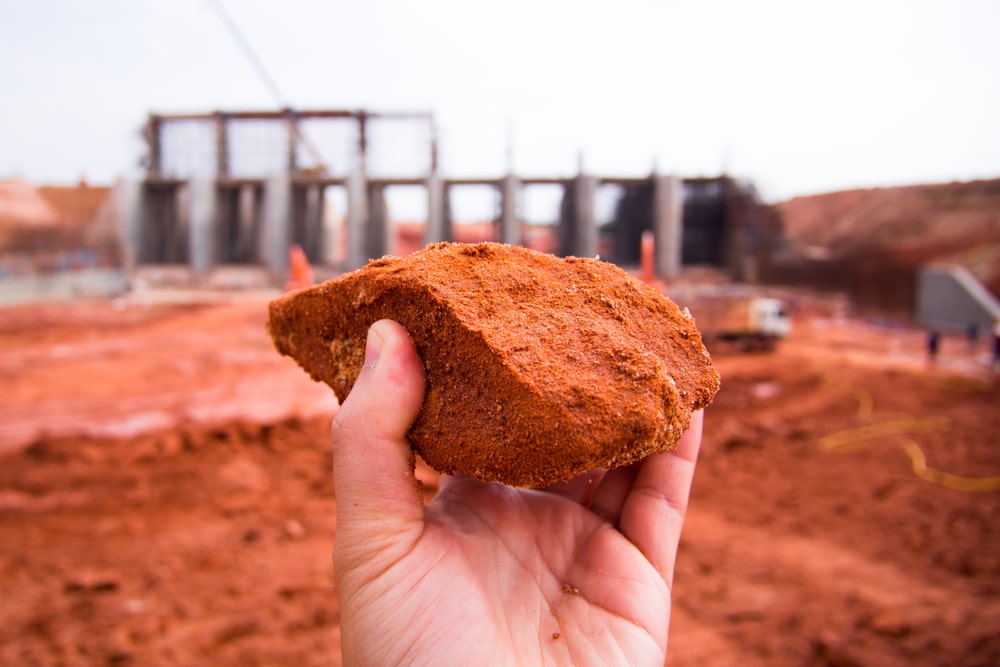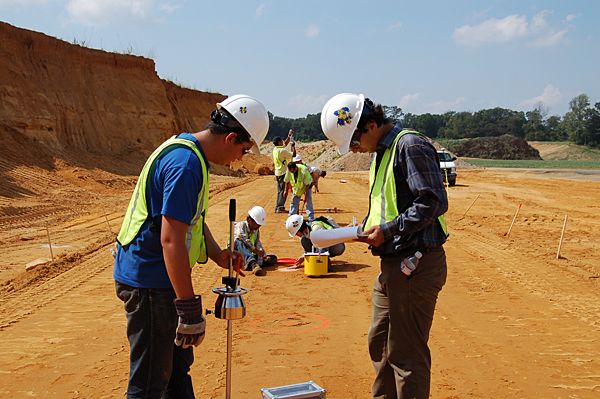Civil Geotechnical Engineering Solutions for Commercial and Residential Projects
Wiki Article
Just How Consulting Engineers Enhance Geotechnical Design Projects: Insights Into Their Expertise, Approaches, and Collaborative Approaches
Consulting designers are essential in enhancing geotechnical design tasks, applying their specialized knowledge to navigate the intricacies of subsurface conditions. Their techniques incorporate a variety of site investigation strategies, consisting of Requirement Penetration Examinations (SPT) and Cone Penetration Examinations (CPT), which inform critical decisions throughout the style and construction phases. Their collaborative strategies foster communication amongst varied project stakeholders, inevitably forming the project's trajectory. As we analyze the multifaceted functions these specialists play, it becomes clear that their contributions expand past technical expertise, motivating a more detailed take a look at the effects for task success.Duty of Consulting Engineers
The proficiency of speaking with engineers in geotechnical design is basic to the effective implementation of construction projects. These professionals play an essential function in examining soil and rock homes, which are important variables affecting layout and construction decisions. By conducting comprehensive site investigations, speaking with engineers accumulate crucial information that educates the style process, guaranteeing projects are improved secure and ideal ground.Consulting designers likewise offer important insights right into risk management (geotechnical geologist). They identify possible geotechnical dangers, such as landslides, soil liquefaction, and settlement concerns, making it possible for stakeholders to apply reliable reduction techniques. Their competence aids in optimizing structure styles, which can cause considerable cost financial savings and enhanced safety
Furthermore, getting in touch with engineers act as an important link between project owners, engineers, and specialists. Their capacity to translate complex geotechnical information right into actionable recommendations fosters cooperation and assists in informed decision-making throughout the job lifecycle. This multidisciplinary strategy not only enhances job efficiency however likewise makes sure conformity with regulative requirements and ideal practices.
Secret Methodologies in Geotechnical Design

One primary methodology is site examination, which involves carrying out area tests and laboratory analyses to gather data on subsurface problems. Strategies such as Requirement Infiltration Screening (SPT) and Cone Infiltration Screening (CPT) are extensively made use of to evaluate soil stratigraphy and strength. Additionally, geophysical methods, including seismic and electric resistivity studies, supply non-invasive means to assess subsurface attributes.
One more important technique is mathematical modeling, which enables designers to simulate numerous circumstances and anticipate exactly how soil-structure communications will act under various loading conditions. Finite Aspect Analysis (FEA) is an usual approach used in this context.
Moreover, the design of structures, retaining structures, and earthworks counts heavily on these techniques - geotechnical geologist. By incorporating advanced analytical devices with area data, getting in touch with engineers can create tailored options that address specific job challenges, inevitably adding to the security and security of building jobs
Significance of Dirt Analysis
Soil analysis works as a fundamental element in geotechnical engineering, supplying necessary understandings right into the physical and chemical residential properties of soil required for efficient construction preparation. Recognizing soil features is important for determining its load-bearing capacity, water drainage habits, and potential for negotiation or instability. Thorough dirt investigations, consisting of tasting and lab screening, assistance recognize parameters such as dirt type, moisture material, density, and shear strength.
These evaluations educate the selection of suitable building and construction strategies and products, inevitably affecting job safety and security and longevity. For instance, cohesive soils may call for various structure designs contrasted to granular soils, requiring tailored design options. Dirt evaluation help in identifying pollutants that might posture risks to human health or the environment, allowing for the growth of reduction approaches.
Incorporating soil analysis into the very early stages of job growth helps to decrease unpredicted obstacles, ensuring that designers can prepare for and resolve potential concerns prior to they intensify. By establishing a comprehensive understanding of the site conditions, speaking with designers can maximize design effectiveness and lower costs, therefore enhancing the overall success of geotechnical design projects.
Collective Methods in Jobs
Successful geotechnical jobs usually depend upon collaborative strategies that bring with each other varied proficiency from various techniques. Effective partnership among seeking advice from engineers, geologists, ecological scientists, and construction geotechnical geologist experts is important for resolving complicated difficulties and maximizing project results. By leveraging the unique skills and expertise of each employee, tasks can benefit from an alternative understanding of the website conditions, governing requirements, and engineering restraints.Regular communication and interdisciplinary conferences facilitate the sharing of insights and cultivate a culture of teamwork. These collective initiatives enable the identification of prospective threats early in the task lifecycle, allowing for prompt mitigation methods. Integrating feedback from stakeholders, consisting of local communities and regulatory agencies, guarantees that all point of views are thought about, improving job approval and conformity.
In addition, the integration of innovative technologies, such as Geographic Info Solution (GIS) and Building Info Modeling (BIM), further improves cooperation. These tools permit the real-time sharing of information and visualization of geotechnical problems, promoting notified decision-making. Ultimately, a collective method not just simplifies task execution yet additionally lays the structure for innovative solutions to complicated geotechnical design obstacles.
Effect On Job Outcomes

Consulting designers employ sophisticated methodologies such as risk evaluation and predictive modeling, which improve the precision of project forecasts. Their ability to incorporate ingenious innovations, like geotechnical instrumentation and information analytics, further refines the design and construction procedures. Consequently, tasks experience improved performance, minimized costs, and reduced hold-ups.
Additionally, cultivating reliable communication and partnership among group members enhances problem-solving capabilities. When obstacles develop, an unified front allows for speedy identification of options, protecting against potential troubles. Eventually, the collaborative efforts of consulting designers add to better end results, ensuring that tasks satisfy both regulatory standards and client expectations.
Verdict

Report this wiki page